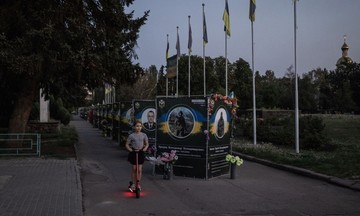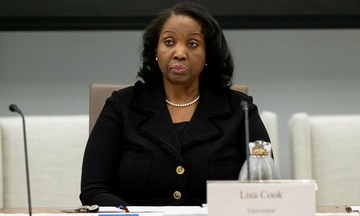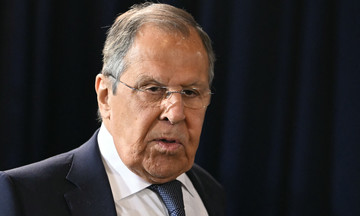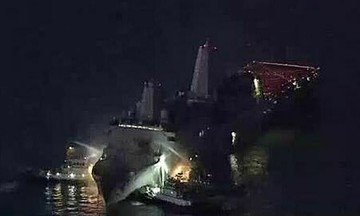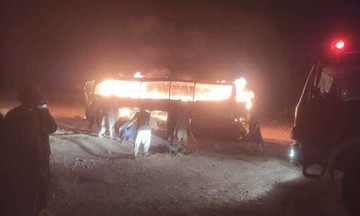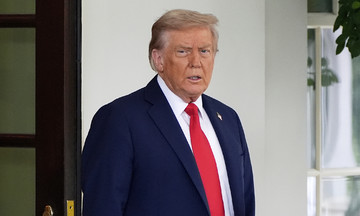Ukrainian President Volodymyr Zelensky arrived in Washington on 17/8 for a meeting with President Donald Trump at the White House. This time, he'll have additional support in the Oval Office.
At least 7 European leaders are also en route to the US for a meeting scheduled immediately after Trump's private discussion with Zelensky. They aim to prevent a repeat of the February clash between the two presidents at the White House. Their presence also underscores a commitment to maintaining the transatlantic alliance.
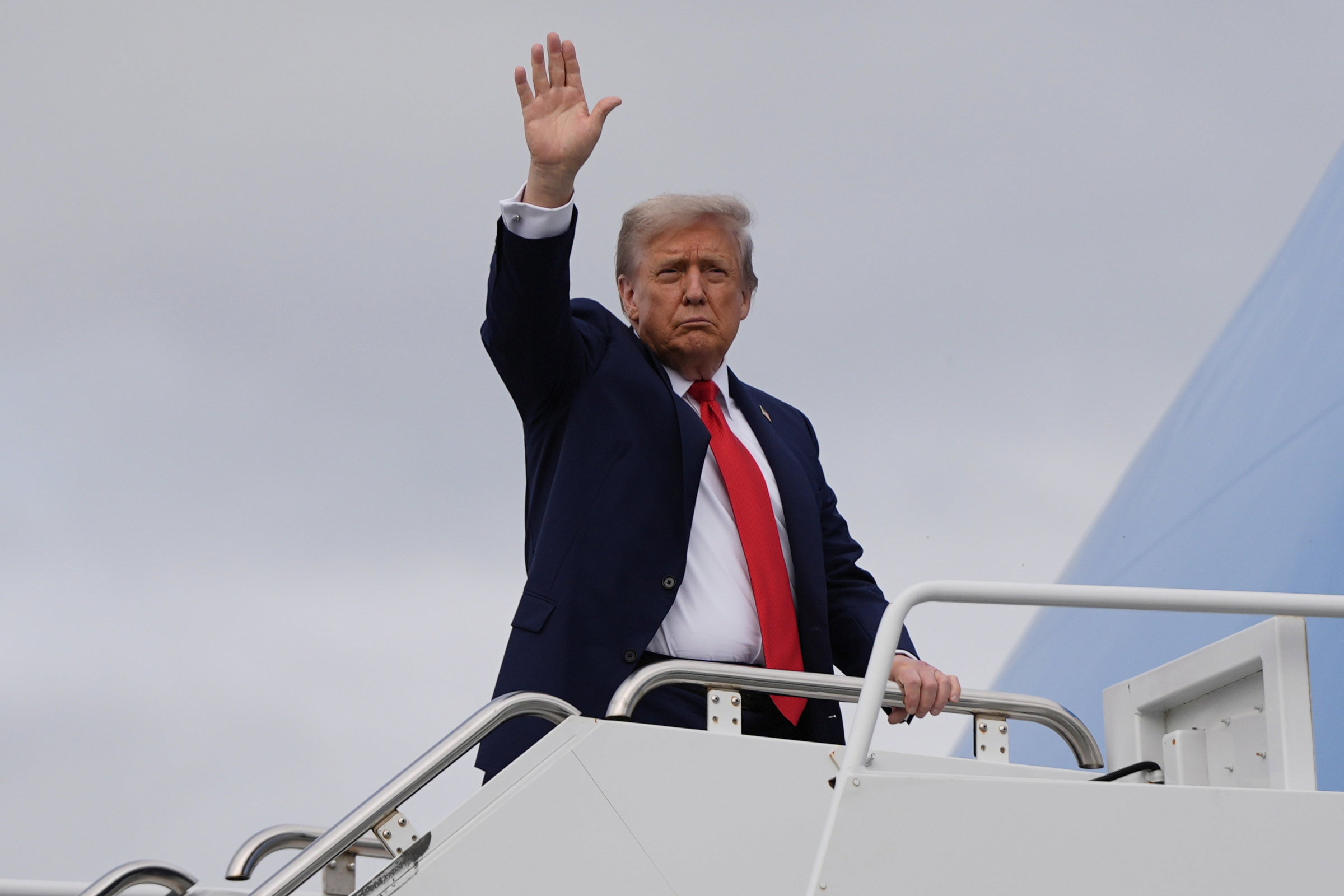 |
US President Donald Trump waves as he boards Air Force One after meeting with Russian President Vladimir Putin at Joint Base Elmendorf-Richardson, Alaska, on 15/8. Photo: AP |
US President Donald Trump waves as he boards Air Force One after meeting with Russian President Vladimir Putin at Joint Base Elmendorf-Richardson, Alaska, on 15/8. Photo: AP
Trump's sudden shift on prioritizing a ceasefire in Ukraine before addressing territorial or security issues has surprised European leaders. They question whether Russian President Vladimir Putin has again influenced him.
This concern prompted the urgent trip to the White House by French President Emmanuel Macron, German Chancellor Friedrich Merz, UK Prime Minister Keir Starmer, Italian Prime Minister Giorgia Meloni, European Commission President Ursula von der Leyen, Finnish President Alexander Stubb, and NATO Secretary General Mark Rutte, according to experts.
Their primary goal is to ensure Trump doesn't side with Russia or pressure Zelensky into an unfavorable agreement. They also seek to protect European interests, potentially jeopardized if the US distances itself from the alliance.
In a call with Zelensky on 16/8, Trump suggested US involvement in post-conflict security guarantees for Ukraine, a notable change from his earlier stance that Europe should bear this responsibility. However, details remain unclear.
At a press conference in Brussels on 17/8, von der Leyen emphasized the importance of security guarantees for Ukraine and respect for its territory. She stressed the need to "end the bloodshed" and called for a trilateral Russia-US-Ukraine summit "as soon as possible".
An anonymous senior European diplomat described the allies' anxieties following the US-Russia summit in Alaska. The diplomat noted the unprecedented speed with which this meeting with Trump was arranged, a pace unseen since the Iraq War.
A key concern surrounding Zelensky's US visit is a potential repeat of the February confrontation, where Trump publicly rebuked him.
At that time, Trump asserted that Ukraine had "no bargaining chips" and, as a weaker nation, should submit to Russia's demands.
He reiterated this message on the evening of 15/8, after Putin left Alaska. Trump told a Fox News reporter that Ukraine must recognize Russia's superior power and consider concessions.
On 18/8, US Secretary of State Marco Rubio, who accompanied Trump to the meeting with Putin, dismissed suggestions that European leaders were coming to Washington to "protect" Zelensky.
"They are not coming here to make sure Zelensky doesn't get bullied", Rubio said in a CBS interview. "We invited them".
European officials stated that Trump told Zelensky he was free to invite guests, after which the White House extended invitations to several European leaders.
Experts believe this meeting will test the transatlantic alliance's strength. European officials have long believed Russia's ultimate goal is to divide NATO and separate Europe from the US, a bond perceived as increasingly fragile under the Trump administration.
The US and its European allies are pursuing different negotiation strategies regarding Ukraine. These long-simmering differences became public weeks before the Alaska summit.
"We're done spending money on the conflict in Ukraine", US Vice President JD Vance declared last week.
Meanwhile, Europe remains committed to supporting Kyiv. They persuaded Trump to provide weapons, provided Europe foots the bill.
Washington's message is clear: Protecting Ukraine is Europe's problem, not America's. The Trump administration is willing to be an arms supplier for profit but seems to hold no other responsibility for Ukraine's defense since Kyiv is not a NATO member.
This appears to be the rift Putin skillfully exploited in Alaska. After 3 hours of talks, Trump seemingly adopted several of Putin's viewpoints. Even before meeting Putin, Trump assured that Ukraine's NATO application would be indefinitely delayed.
He previously hinted that Ukraine had provoked the conflict by applying to join NATO and the European Union.
After the 15/8 summit, he went further. While initially agreeing with European allies that a ceasefire should precede peace talks, Trump abandoned this position and sided with Putin.
"Trump's abandonment of the ceasefire effort and his silence on the 'serious consequences' he once threatened against Russia for continued fighting has put the alliance in a precarious position", commented James G. Stavridis, a former US Navy admiral and NATO Supreme Allied Commander from 2009 to 2013.
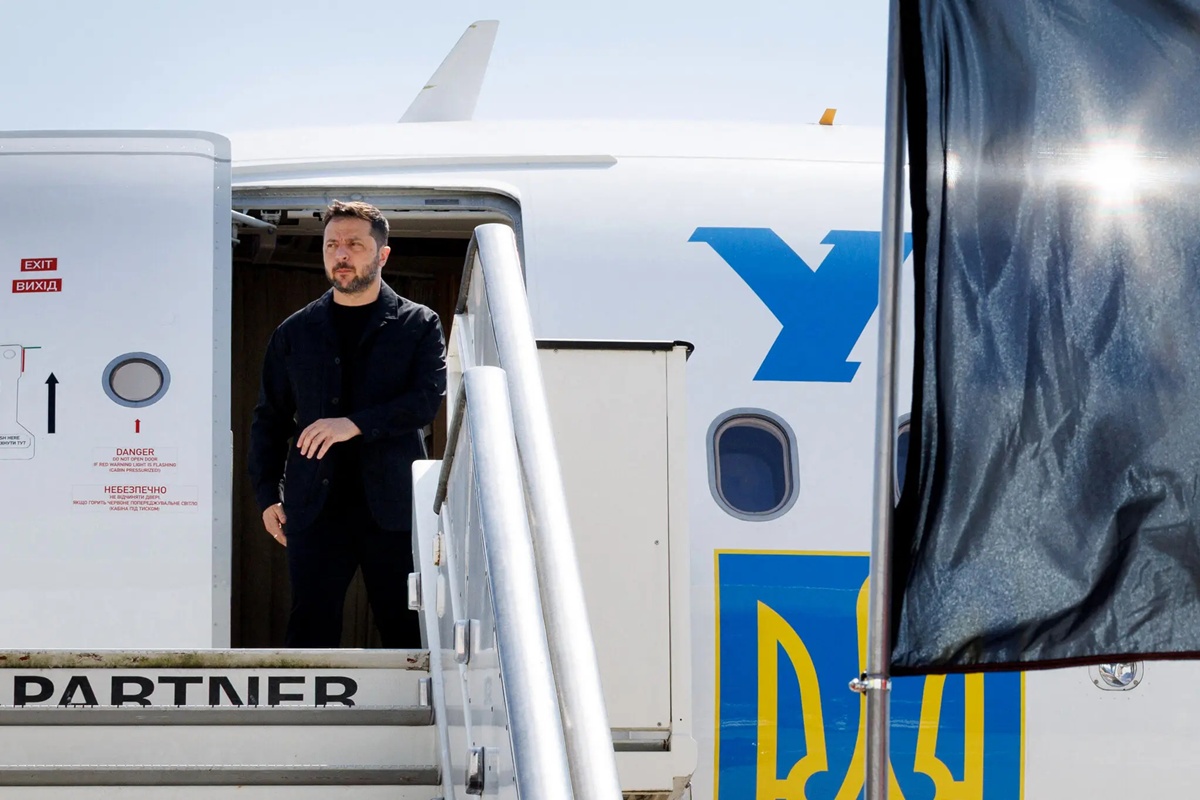 |
Ukrainian President Volodymyr Zelensky arrives in Belgium for a virtual meeting with European leaders in Brussels on 17/8. Photo: AFP |
Ukrainian President Volodymyr Zelensky arrives in Belgium for a virtual meeting with European leaders in Brussels on 17/8. Photo: AFP
This is the kind of division European leaders are trying to avoid. New NATO Secretary General Rutte has frequently visited Washington to strengthen the transatlantic alliance. He's determined to prevent a repeat of Trump's earlier threats to withdraw the US from NATO, which he called "obsolete" during his first term.
At the June NATO summit, Rutte persuaded members to commit 5% of their GDP to defense, an early win for Trump. This demonstrated, albeit a decade late, that Europe was taking its defense responsibilities more seriously. Trump left the summit praising NATO.
European leaders then devised the US arms purchase program for Ukraine, appealing to Trump's financial interests. In this scenario, the US remains an arms supplier without incurring financial losses.
This strategy was effective until a few weeks ago, as Trump criticized Putin for lacking genuine negotiation intentions and continuing attacks on Ukraine. He issued ultimatums to Moscow and threatened secondary sanctions on countries buying Russian oil.
For the first time since Trump's second term began, the US approach, including sanctions threats, aligned with Europe's military and economic pressure on Russia. Mid-last week, European leaders spoke with Trump, who agreed to maintain a firm stance. But that unity fractured in Alaska.
"Everyone has determined that the best way to end the terrible conflict between Russia and Ukraine is to go straight to a peace agreement", Trump posted online on the morning of 16/8.
Trump's fluctuating stance contrasts with Putin's consistent commitment to his objectives in Ukraine. "Peace will come when we achieve our goals", Putin declared in late 2023.
Even then, Putin subtly signaled a willingness to discuss a ceasefire, but only if it froze existing battle lines, effectively ceding 20% of Ukrainian territory to Russia. His offers were rejected.
With recent Russian military gains, Putin seems less interested in a ceasefire. This makes a peace agreement currently unlikely. Putin appears to be calculating that prolonging negotiations and delaying a hasty ceasefire is his best strategy.
As European and US officials gather at the White House, they have much to discuss. Europe must secure Trump's agreement on specific security guarantees for Kyiv, including deploying peacekeepers in Ukraine.
In discussions with European leaders after the Alaska summit, Trump first hinted at participating in this effort, though many believe his contribution would be US intelligence, not troops.
In London on 17/8, after a virtual meeting with other European leaders, UK Prime Minister Starmer issued a statement praising Trump for his "commitment to providing security guarantees for Ukraine".
This message seemed intended to hold Trump accountable. The statement reaffirmed the willingness of the UK and other European nations to "deploy security forces as soon as hostilities cease to help protect the skies and waters, and rebuild Ukraine's armed forces".
However, the success of this effort largely depends on the US, and Washington has yet to issue such a concrete statement.
Vu Hoang (After Washington Post, AFP, Reuters, AP)






